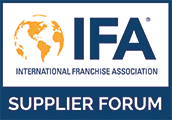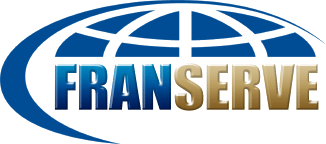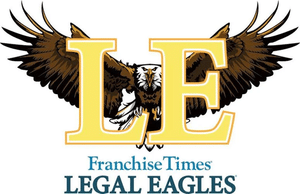If you are thinking of selling your business to your key manager or perhaps a family member without sufficient resources to consummate an all cash transaction, you should keep the below elements in mind in the deal structure.
A business owner, with the help of skilled advisors and well drafted legal documentation, can keep control of their business until they are paid the sale price to ensure a smooth transition. If you suspect that the children, key employees or co-owners in line to succeed you do not have the funds for an all cash deal, consider the following 10 elements to help make the insider transfer successful.
Element 1: Time
A transfer to insiders takes time: time to plan, time to implement and to pay the departing owner. Typically the more time owners take to transfer the company, the less risk they incur and more money they receive from the new owners (unless funded with disability/life insurance).
For that reason, the first question an owner must answer is: Am I willing to take time (typically three to eight years) to execute and complete an insider transfer (while maintaining control)? If the answer is no, then it is probably best to consider other exit paths.
Element 2: Defined Owner Objectives
If owners are willing to devote the time necessary for this exit strategy, they also must define and or quantify their objectives. These may include:
- a) Financial security and independence;
- b) Departure/retirement by a chosen date;
- c) Keeping family legacy or company culture intact;
- d) Rewarding key employees; and/or
- e) Taking the business to the next level—on someone else’s dime.
In a well-designed transfer plan, these objectives are met before control is transferred.
Element 3: Cash Flow
Healthy cash flow is critical to any sale. No buyer, (whether outside third party or insider) wants to buy a company with anemic cash flow. In a transfer to insiders, however, cash flow assumes gargantuan importance because initially it is the major, if not sole, source of your sale proceeds.
Element 4: Growth in Business Value
Like healthy cash flow, buyers look (and pay top dollar) for companies that have the potential to grow in value. In transfers to insiders, only if cash flow continues to grow does the ownership transfer generally occur. For this reason, it is vitally important that owners contemplating an insider transfer install and cultivate that which drives value before and during their exit transition.
Element 5: Capable Management Desiring Ownership
Having a motivated management team in place and capable of replacing you is hugely valuable to any buyer. In a transfer to insiders, such management is essential. That management group must desire ownership and be willing to sign personally for any acquisition financing or ongoing company debt. Owners often assume that their management teams want to own their companies, and they do…but sometimes only until they realize that they have to pay for ownership.
Element 6: Minimize Taxes
While no owner we know wants to pay more taxes than absolutely necessary, those contemplating insider transfers must focus on minimizing taxes. In an insider transfer it is imperative that you and your advisors structure the sale to minimize taxes on the company’s cash flow (pre-tax income) because without planning the cash flow is taxed twice:
- a) once when the insider receives it (as the new owner) and then pays taxes before paying you to purchase the company; and
- b) again when you pay taxes on the proceeds you receive.
One goal of tax planning is to subject the company’s cash flow to taxation only once. Accomplishing this feat takes considerable planning, but it’s worth the time and trouble to save a third or more of the cash flow from this type of double taxation. One-time taxation means owners receive more money more quickly and thereby reduces risk of non-payment.
Element 7: Regulate an Incremental Transfer of Ownership
One of the most important advantages of the well-designed insider transfer plan is that it gives the owner the ability to regulate how ownership is transferred, when it is transferred and how much ownership is transferred. If company performance falters, employees stumble or if the owner chooses instead to sell to a third party, the well-designed insider exit plan keeps the owner in the driver’s seat.
Element 8: Increase Control = Decrease Risk
While business owners take risks every day, they don’t relish risking their own and their families’ future financial security. Therefore, we use strategies to retain voting and operational control in the hands of the owner and shift operational business risk from the owner’s shoulders to that of the incoming owners so that owners stay in control of their companies until they receive the entire sale price. If you’d like to talk about the many ways to accomplish this, just call.
Element 9: Written Road Map with Deadlines
To succeed, we believe that you must put your transfer plan in a written document and communicate it clearly (and regularly) to the eventual owners. If the plan is not in writing, it simply is not credible and neither you, nor your employees, will take it seriously. More importantly, the written plan is the playbook for your exit that you’ll use to coordinate your actions with those of your advisors (thus reducing delay and cost). The plan should include a timeline and provide accountability—who will do what, when—for all participants, including the owner! Without incremental, staged checkpoints, don’t bother starting. You’ll never finish a marathon if you don’t have mile-by-mile goals to meet.
Element 10: Education (Yours)
You need to understand the ins and outs of insider transfers because, unlike sales to third parties, you will control your business and the exit process won’t be over until you’ve been paid. The best way to learn about how to do these deals is by dealing with experienced professionals who have successful navigated similar transactions.
Ready for a Free Consultation?
We have helped many small business owners create and execute effective insider business transfers. If you are in the early stages of planning or ready to start drafting documents, please give us a call to schedule a free initial consultation at 215.525.1165.







